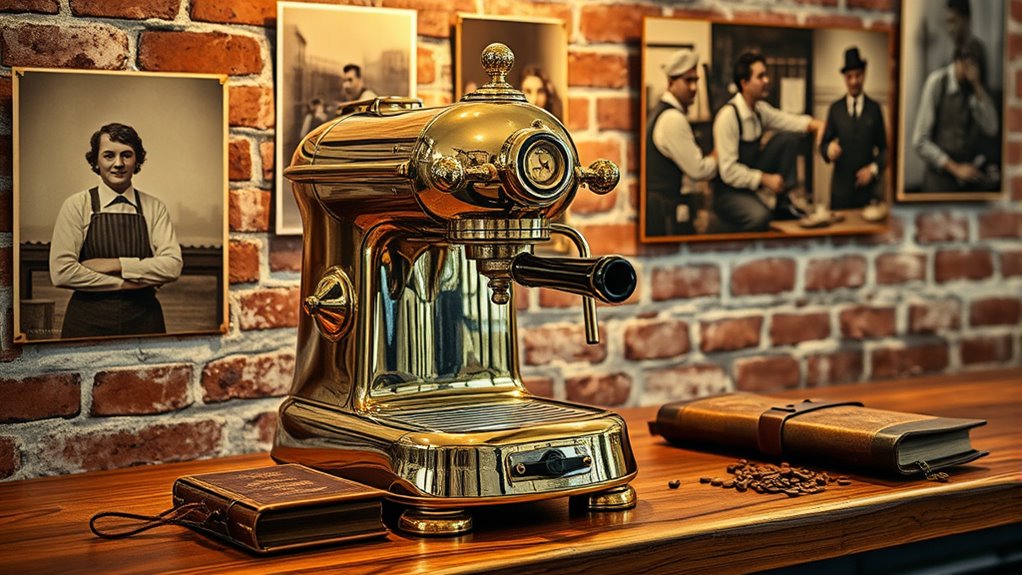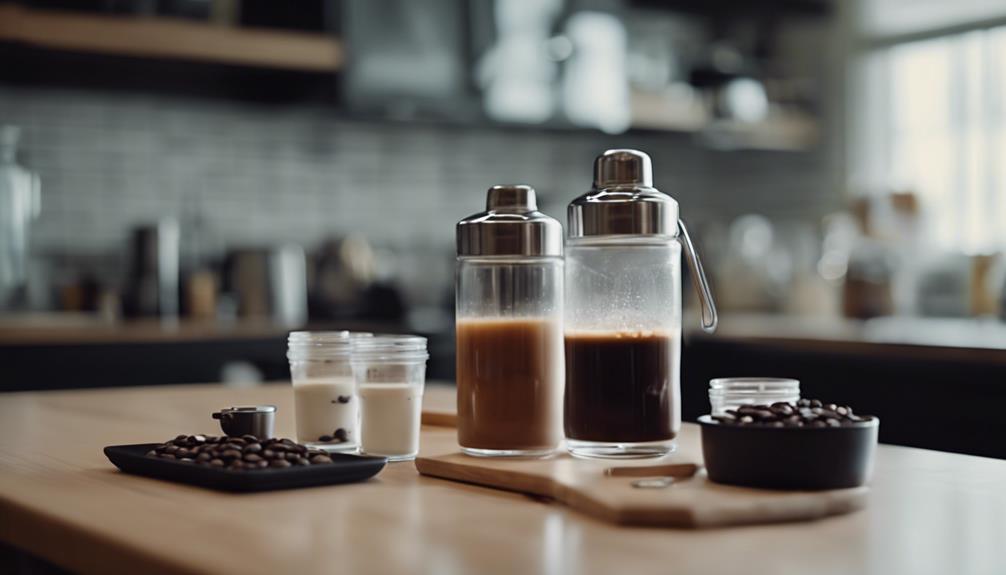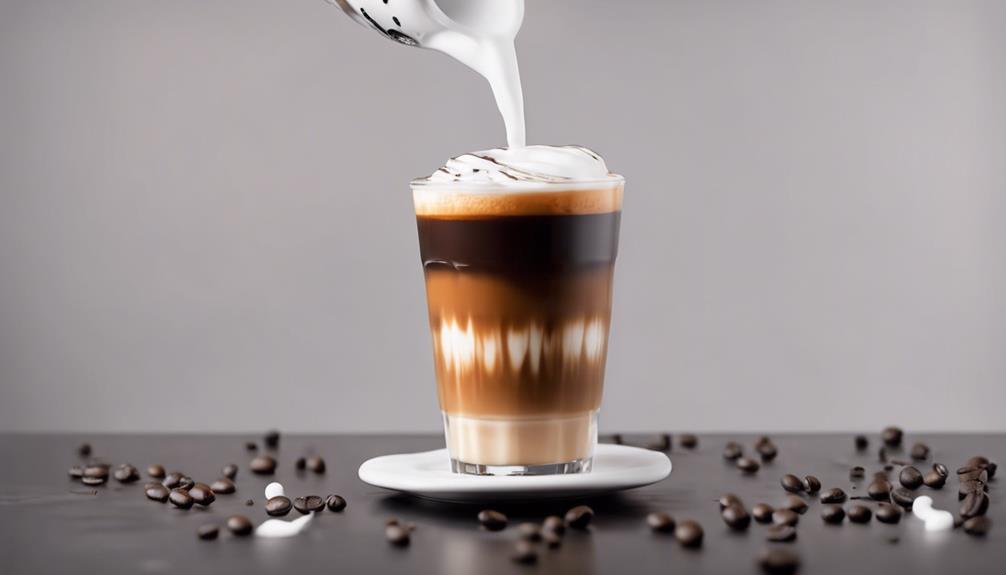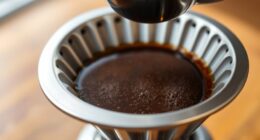The history of the espresso machine starts in 1884 when Italian inventor Angelo Moriondo created a steam-powered device to brew coffee more efficiently. His design aimed at quick, bulk coffee preparation but didn’t produce true espresso. Moriondo’s innovation paved the way for future improvements, inspiring engineers to refine pressure and extraction methods. If you want to learn more about how espresso machines evolved into what you see today, there’s much more to discover.
Key Takeaways
- The espresso machine’s origins trace back to 1884 with Italian inventor Angelo Moriondo’s steam-powered device.
- Moriondo’s early machine focused on bulk brewing and did not produce true espresso or rich crema.
- His invention pioneered using water pressure to extract coffee, inspiring future innovations.
- Limitations of early models highlighted the need for precise pressure and technological improvements.
- Moriondo’s work laid the foundation for the evolution of modern espresso machines emphasizing efficiency and quality.
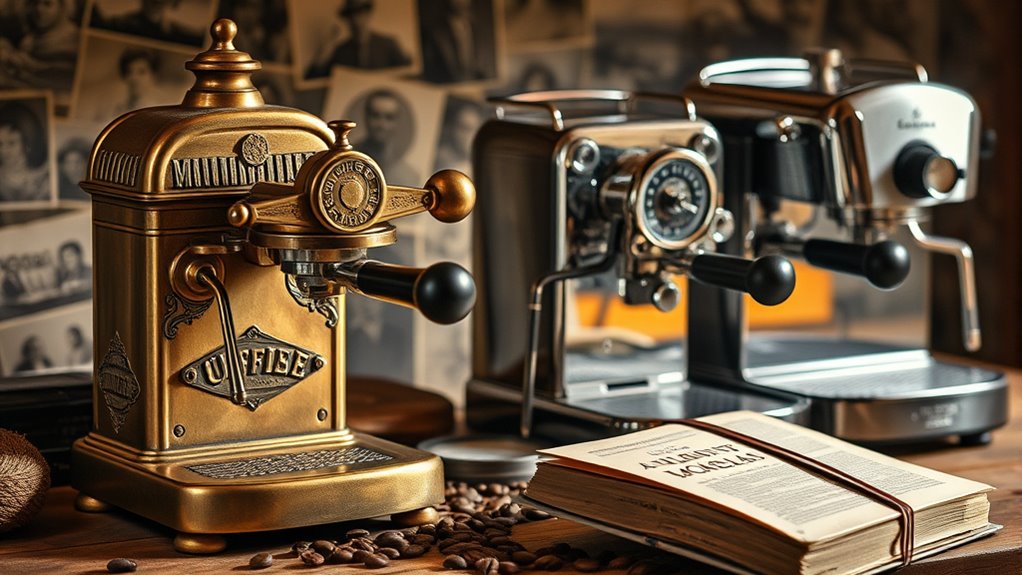
The history of the espresso machine is a story of innovation and technological progress that transformed coffee brewing. It all began in 1884 when Angelo Moriondo, an Italian inventor, developed a steam-powered device designed to brew coffee more efficiently. His early machines aimed to speed up the process by using water pressure to force hot water through coffee grounds, a method that set the foundation for future espresso innovations.
Angelo Moriondo’s 1884 steam-powered device revolutionized coffee brewing with water pressure technology.
Moriondo’s device was patented, marking a significant milestone in coffee machine history. Unlike later models, his machine was primarily intended for bulk brewing, allowing large quantities of coffee to be prepared quickly—an essential feature for busy cafes and establishments. While Moriondo’s design didn’t produce what we now recognize as a true espresso, it represented a pivotal step toward that goal.
His early machine used steam pressure to force hot water through coffee grounds, a novel approach at the time, and demonstrated the potential for more efficient coffee brewing methods.
As you trace the development of espresso machines, you see how Moriondo’s pioneering work influenced subsequent inventors. His focus on water pressure and brewing speed laid the groundwork for others to refine the process. The early machines weren’t perfect—they lacked the ability to produce the rich crema or the precise pressure needed for authentic espresso.
However, they proved that using pressure to extract coffee could be scaled up from simple percolators to specialized machines. Moriondo’s contributions are integral to understanding how the concept of espresso evolved from basic steam-powered devices into the sophisticated equipment we use today.
His 1884 patent marked the beginning of a long journey toward the modern espresso machine, driven by continuous innovation and technological improvements. Over time, the focus shifted from bulk brewing to single-shot extraction, improving flavor, aroma, and crema.
Moriondo’s work is an essential chapter in that history, illustrating how early machines used steam and water pressure to set the stage for more advanced brewing technologies.
Frequently Asked Questions
Who Invented the Espresso Machine?
You’re curious about who invented the espresso machine. You should know that Angelo Moriondo first patented a steam-driven device in 1884, but it was Luigi Bezzera who improved its design in 1901, creating the first single-shot machine.
Later, Desiderio Pavoni and Achille Gaggia made key innovations, leading to the modern espresso machines we use today.
What Is the History of Espresso?
You’re asking about the history of espresso. It started in Italy during the early 20th century, designed for quick, concentrated coffee in cafes. Luigi Bezzera filed the first patent in 1901, and early machines used steam pressure, which limited quality.
In the 1940s, Gaggia’s lever-driven machines increased pressure, and by the 1960s, pump-driven machines standardized espresso brewing at about 9 bars, shaping what we enjoy today.
What Was the Espresso Machine 1900S?
In the 1900s, espresso machines were early mechanical devices designed for busy cafes. You’d see ornate, manual machines that relied on steam pressure of about 1.5-2 bars to brew coffee quickly into a single shot.
These machines were innovative for their time, offering faster brewing, but they still had limitations like less crema and flavor complexity. They laid the foundation for future innovations in espresso technology.
Why Did Angelo Moriondo Invent the Espresso Machine?
You might wonder why Angelo Moriondo invented his steam-powered coffee machine. He created it to speed up the slow, traditional European coffee brewing process, especially in his hotel and café in Turin.
Conclusion
Now that you know the history of the espresso machine, you can appreciate how far this essential coffee maker has come. From early inventions to modern masterpieces, each development has brought richer flavors and faster brewing. Next time you enjoy a shot of espresso, remember the innovative minds behind it. Their passion and ingenuity have shaped your daily ritual, making every sip a small celebration of history and craftsmanship.
